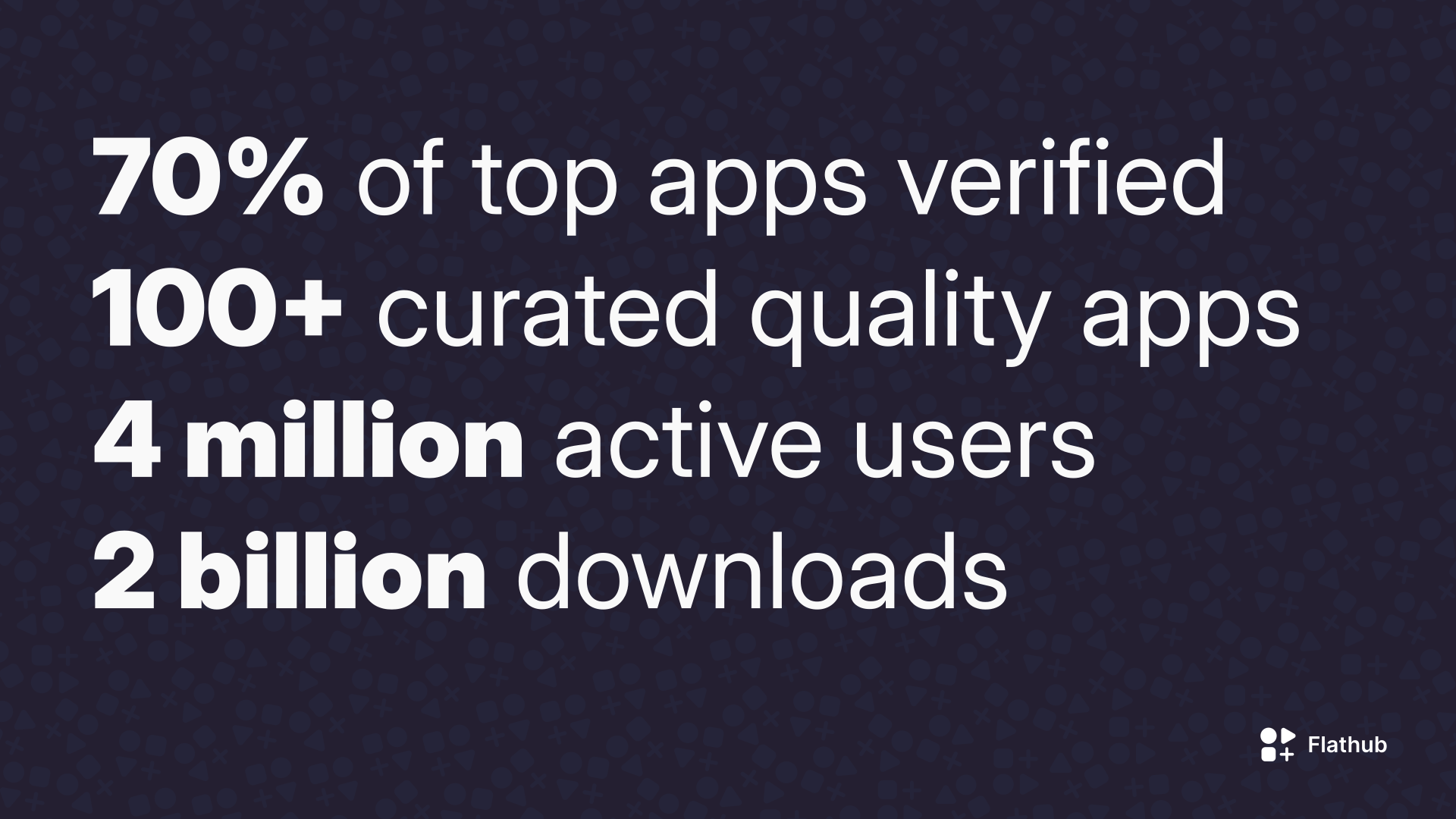- cross-posted to:
- gnome@discuss.tchncs.de
- linux@programming.dev
- cross-posted to:
- gnome@discuss.tchncs.de
- linux@programming.dev
We’re back with some new milestones thanks to the continued growth of Flathub as an app store and the incredible work of both our largely volunteer team and our growing app developer community:
- 70% of the most popular apps are verified
- 100+ curated quality apps
- 4 million active users
- Over 2 billion downloads
Regardless of how you interpret the statistics, I think that this is a sign that the long vexed problem of software distribution for Linux has been significantly improved. Not quite solved, but for most desktop apps this is fantastic news.
Thank you for acknowledging the positive development. It’s so nice to see some appreciation for the effort put into solving our issues. I’m so tired of all the complaints and outrage about this or that solution, be it flatpak, appimage, snap or whatever.
Flatpaks aren’t perfect, but they are really solid in almost all cases.
For the general user that just wants a simple way to download apps on Linux, it just works.
For power users, they will know already the upsides and downsides.
Edit: it they’re counting updates, then this number probably is accurate, so the bit questioning the number can probably be disregarded
I wonder how inflated that 4 million active user number is. They say it’s measured by “count[ing] the number of updates to that runtime we’ve served between two releases”. But that method doesn’t account for people distrohopping/reinstalling or QA testing by distros.
I maintain a snap package and something I really like about the Snap Store is the metrics they give. Note that this data is aggregated, I can’t see anything specific about a user. I am able to see:
- weekly active users
- distro and version
- CPU architecture
- country
- which version of app
- which channel (stable, beta, edge, etc)
But Flathub only measures total downloads. An app could get a thousand downloads and those thousand people could immediately uninstall the app and you would have no way of knowing that. With snap, you would see a week later a drop off of a thousand users.
deleted by creator
How does it measure weekly active users? Does it keep track of who runs the application? And how does this account for distro hoppers and QA testers?
I’m not 100% on the details, it’s hard to find good documentation on this, but here’s my understanding.
Every machine with snap install has an ID associated with it. Whenever snap refresh is run, a list of installed apps is sent back to Canonical so that Canonical can fetch updates. But they also use that list is also used for generating metrics. Users aren’t double counted because of the unique ID associated with the install. So Canonical just needs to keep track of all the IDs in the last week who’ve checked for updates and count them up. That final number is then shown to maintainers of the snap.
Snap isn’t checking if you actually open the snap though. It’s just counting people who have the app installed.
But they also use that list is also used for generating metrics
But isn’t that the same as Flatpak’s “X clients download updates”-metric?
Users aren’t double counted because of the unique ID associated with the install.
How to they associate that with the user or the machine? Rather than the amount of snapd clients/OS’s with snapd on it? (as to not count one person with two Linuxes double, which Flatpak does)
The fact that snap has that much telemetry is another reason I stick to Flatpak.
One of the best things about ditching Ubuntu for Debian was losing worthless snaps and gaining UI support for flatpaks.
Flatpak is the default in ubuntu though? Atleast it is for me in 24.04
How do they count active users? I have four machines that use flatpaks. Is that four users or one?
How do they count active users?
By seeing by how many flatpak clients apps are being updated.
have four machines that use flatpaks. Is that four users or one?
Four.
4 million active users 😏






